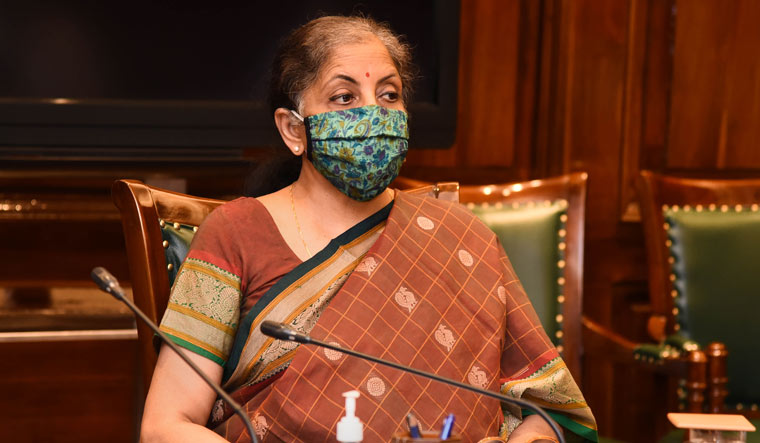To be prudent or prolific? A pandemic-era profligacy could be on the cards as finance minister Nirmala Sitharaman confronts the pesky issue of fiscal deficit ahead of her crucial budget presentation on February 1.
Fiscal deficit refers to the percentage gap in government’s total income (like taxes and duties) to the money it spends (capital expenditure, paying interest on borrowings, etc). The Fiscal Responsibility and Budget Management Act, or FRBM, prescribes that it be ideally limited to maximum 3 per cent of the gross domestic product (GDP).
Easier said than done. Forget 3 per cent, Reuters estimated last week that India’s fiscal deficit this financial year would exceed 7 per cent, as revenue collections suffer from the lockdown and the ensuing restrictions to control in the spread of Covid-19.
Arindam Guha, partner, leader (government and public services), Deloitte India, puts the figure somewhere around 5.5 per cent, but that is no cold comfort. “If you add in the deficit incurred by state governments, (we have to add in) an additional deficit of 4.5 per cent,” he says. Fiscal deficit had crossed Rs 10 lakh crore, and those are official figures only till November.
The big question now is whether Sitharaman & Co will throw caution to the winds and go in for more big-ticket spendings in an attempt to revive growth—the nation is officially in recession after two consecutive quarters of decline in GDP, the April-June quarter at nearly 24 per cent while the July-September quarter managed to bring the decline to 7.5 per cent. Her initial estimate, while presenting the budget last February, was that the fiscal deficit would be reined in at least at 3.5 per cent for this financial year. However, the government borrowing, first calculated at Rs 7.8 lakh crore, was later revised to Rs 12 lakh crore as the government unveiled a slew of relief and stimulus packages following the pandemic, including the PM Garib Kalyan Yojana.
“The government should opt for increased spending without worrying much about the fiscal deficit,” argues Aniket Doegar, CEO and co-founder of HaqDarshak, a platform that connects citizens to welfare schemes. “For the next couple of years, it is important that the Central government not only matches, but also doubles up its spending on key programmes.”
In fact, some economists actually crib that the government has still not spent enough, considering the precarious state of the economy post-Covid and the need for urgent top-down relief measures. Business bodies like Assocham have also been clamouring for more fiscal relaxation. Sitharaman herself is on record that she does not worry about the fiscal deficit numbers too much, as the government has no option, but to spend more to revive growth in the upcoming budget.
Not that it doesn’t have any repercussions. Despite the extraordinary global economic situation, a shooting up of the fiscal deficit could lead to lowering of India’s credit rating by international agencies. This could boil down to stumbling blocks in accessing international credit easily, as well as worrying international investors, especially at a time India needs more money.
also read
- India fastest growing economy during last 3 financial years: Nirmala Sitharaman
- 'I don't have money to contest Lok Sabha elections': Nirmala Sitharaman
- Nirmala Sitharaman confident of India Inc aligning to country's developmental goals
- Sitharaman meets with top execs of 50 fintech companies; asks them to strictly comply with norms
With no punitive measures proposed in the original FRBM Act, the limit of 3 per cent has been breached by successive governments over the years since it came into force in 2003. The N.K.Singh Committee, formed to review the act, had suggested last year that the act itself be replaced with the ‘Debt Management and Fiscal Responsibility Bill, 2017’. The new bill’s proposals include setting up an autonomous body to review how well its clauses are implemented and sets conditions under which the government is allowed to deviate from the targets. Ironically, the new bill proposes to set the fiscal deficit even lower, from 3 per cent to just 2.5 per cent.





